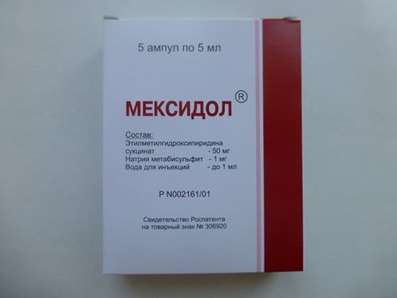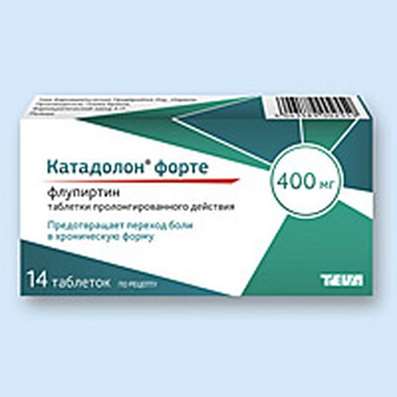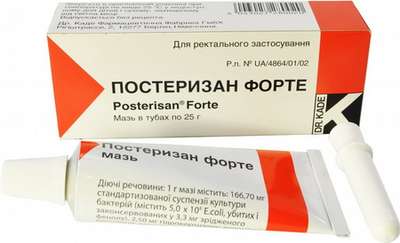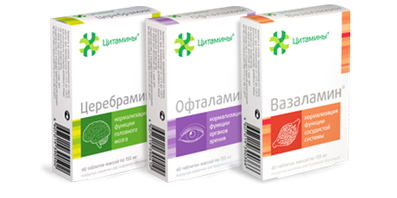Aniracetam
27 Dec 2016
Aniracetam is a fat-soluble molecule from the class Racetam. Its touted as an improved version of Piracetam, noting that it improves the mind, stimulates creativity, reduces anxiety levels and facilitates depression. Studies are lacking in humans.
Basic information about Aniracetam
Aniracetam is chemical compound due to its structure pyrrolidine (one of the most common Racetamic structures) relating to the Racetam class. Aniracetam is soluble in fat, it should be taken with fatty acids. It is also a cholinergic agent. Aniracetam manifests itself as a positive modulator of excitatory receptors known as AMPA receptor and reduces the level of receptor desensitization. It has directed and long-term neurological stimulating effect. The influence exerted on the brain depends on the type of AMPA modulators, as found in the brain AMPA receptors differ in structure. Aniracetam is known to improve holistic thinking (used, for example, when collecting puzzles). It also improves blood circulation and increases the activity in the associative cortex. Laboratory studies have not been conducted. Aniracetam, as AMPA modulators studied as anti-depression and other diseases related to the central nervous system (eg Alzheimer's disease). Aniracetam is also known as 1-P-anisole-2-pyrrolidone, Ro 13-5057, CAS 72432-10-1, 1 (3-methoxybenzene) -2-pyrrolidone.
Aniracetam should not to be confused with Piracetam!
You should know that:
- Aniracetam has a stimulating effect, not similar to caffeine
- Aniracetam is fat-soluble, but it can be taken on an empty stomach.
- Aniracetam in powder form has a very bitter taste.
Aniracetam Is an:
- Racetam
- Nnootropic.
Aniracetam is well digested with cholinergic compounds.
Do not digested with pills that block fat (due to the fact that Aniracetam fat soluble).
Note! Aniracetam Most studies have been conducted in laboratory animals such as mice and monkeys. In such cases, use extrapolation to predict the potential effect of the substance on the human body, since human studies required sampling brain tissue. You can also like Piracetam.
Aniracetam: instructions for use
Aniracetam Dosage in the limit from 10mg / kg to 100mg / kg body weight was effective for rats in the laboratory. Limitations of the study data showed that an effective dosage for humans is 1,000-1,500 mg (per day).
The dosage of 400 mg is effective, too. Aniracetam is taken in the amount of 1,000-1,500 mg is divided into two stages (500-750 mg) during a meal during the day.
Aniracetam powder has a very bitter taste. To avoid this, it should be taken in capsules.
Overview of Aniracetam
Structure
Aniracetam is pyrrolidine compound from the class racetam having additional anizole ring from Methoxy group in the para position. The amino group is replaced by Piracetam o-methoxy group to the most remote point of the binder. The structure of Aniracetam is not similar to Oxiracetam structure (which is very similar to Piracetam) and Pramiracetam (quite unique), but is very similar to Nifiracetam structure. Aniracetam is Piracetam molecule, wherein the Methylated amine is substituted with a phenyl group. This modification was made in order to improve its solubility in fats, and is the hallmark of piracetam aniracetam.
Molecular targets of Aniracetam
Ion channels
Aniracetam, which has a similar structure and Nifiracetam action at a dosage of 1 mm has a positive effect on the calcium current in L-type channels in neurons.
Pharmacology of Aniracetam
Absorption and bioavailability
Most of Aniracetam is absorbed through the gut (even on an empty stomach), but first he undergoes significant hepatic metabolism. For this reason, its bioavailability varies within 8.6-11.4%. It is theoretically possible to increase the bioavailability while reception with fatty acids, but the case studies were not conducted. Aniracetam is fat-soluble, its effect is enhanced by the simultaneous reception of fatty acids, but apparently not to assimilate required simultaneous reception of fatty acids.
Serum
The concentration of Aniracetam in plasma when receiving 300 mg reaches 2.3mkg / l, at 1200mg - 14.1mkg / L, with a half-life of 35 minutes after taking Aniracetam. Initially Aniracetam undergoes significant hepatic metabolism, which are major metabolites of N-Anisole GABA-2-pyrrolidone, and anisic acid. After 28 hours 95.8% dosing output (mainly in the urine). The study, which was conducted in healthy male volunteers, Aniracetam revealed a mean maximum concentration of 8.75 +/- 7.82 and 8.65 +/- 8.7ng / ml for the two test periods. Maximum concentration was achieved within 0.4 +/- 0.1 hours (400 mg orally Aniracetam). The half-life in plasma was equal to 0.16 +/- 47 and 49 +/- 0.24 hr., and the mean concentration in urine was equal to 4.53 +/- 6.62 and 4.76 +/- 6.65ng / h / ml. It is possible that such low levels of Aniracetam were observed due to significant metabolism following the oral reception. Increased dosages of Aniracetam (50-100mg / kg body weight) does not give a meaningful increase in the average or maximum concentration, or to the maximum concentration, but of Aniracetam prolongs the average concentration in urine for 1.7-2.1 hours. Aniracetam is rapidly absorbed (less than 30 minutes), and is also rapidly metabolized. Large dosages do not affect the duration but prolong the mean concentration in urine of Aniracetam, as they delay time excretion or metabolism.
Metabolism
Aniracetam is main human metabolite - a compound known as H-GABA Anisole (4.p-anisaminomaslyanaya acid or BUN). It is those 70 percent of aniracetam dosage that remain after biotransformation in the liver. Alternative pathways lead to the production of P-anisic acid (which is conjugated to glucuronic acid or glycine), and 2-pyrrolidone (who, after talking on the Krebs cycle, producing energy by means of an intermediate succinate. One study confirmed that aniracetam may be effective against amnesia ( test was conducted on the selection reaction) at a dosage of 10-100mg / kg. Subsequently, all metabolites were tested. P-anisic acid and 2-pyrrolidone lacked antiamnestic activity, whereas N-Anisole GABA at dosage of 30 mg / kg had a the same effect. Aniracetam metabolized to N-Anisole and GABA-P-anisic acid having physiological activity in humans.
Neurology
The glutamatergic neurotransmission
AMPA receptors is one of the three subgroups of glutamate receptors, the other two groups - kainate and NMDA receptors (N-methyl-D-aspartate). These AMPA receptors mediate fast excitable amino acid transmission and heterogeneously expressed in the brain as possible heteromers eight subunits (GluR1-R4, in the open and closed states). Aniracetam is a modulator of the AMPA receptor binding sites inactive AMPA receptor and allosterically modifying the binding sites, the final result of which is the reduced level of desensitization in the presence of positive stimuli (such as glutamate, which is produced by the body). This effect occurs when a 1.5 mM concentration. AMPA receptors are positively modulated aniracetam, similar to other base Racetamic compounds. Aniracetam is a positive modulator of kainate receptors. Aniracetam does not inhibit NMDA receptors directly, but does not prevent their oppression. Possible beneficial effect on the kainate receptors. The interaction with NMDA receptors is very weak (probably lack thereof).
Adrenergic neurotransmission
Activation of AMPA receptors of neuronal norepinephrine release. 100um (but not 10 microns) Aniracetam enhance the effect of AMPA on the release of noradrenaline in the hippocampal cells. Kynurenic acid is able to suppress the ability of NMDA norepinephrine release from cells, this inhibition is reduced aniracetam (EC50 in the range 10-100nm, and nearly complete inhibition at 1 mm), with no effect on the basal level of outflow, and the release of norepinephrine, NMDA-induced (at this dosage). AMPA receptor blocking does not entail this blocking effect, while kynurenic acid inhibits activation of the AMPA receptor aniracetam (1-100mkm) does not counteract the effect of active (in this case was effective cyclothiazide).
GABAergic neurotransmission
Aniracetam enhances efficiency cortisol GABAergic inhibition independent of the NMDA.
Cholinergic neurotransmission
Aniracetam enhances signal transduction α4β2 nicotinic receptors at 0.1 nm in a dosage of interacting with the GS protein, without affecting protein kinases.
Dopaminergic neurotransmission
Studies conducted on rats showed that aniracetam (at a dose of 50mg / kg po) reduced circulation rate of dopamine in the striatum and reduces the level of dopamine in the hypothalamus and striatum. It also reduces the level of serotonin in the hypothalamus, but it increases in the cortex and striatum, reduces the rate of circulation in the hypothalamus, and increases the speed tsikrulyatsii in cerebral cortex, striatum and brain stem.
Neuroprotection
Aniracetam mitigates the damage caused to memory and ability to learn, if it is caused by substances and injuries, such as cholinergic antagonists, cerebral ischemia, and electric shock. Aniracetam protects the body from damage caused to scopolamine, much more efficient (when 1.5gr) than piracetam (with 2.4gr).
Anxiety and depression
Aniracetam is able to reduce the level of anxiety in the rat, and, theoretically, in humans. This effect is possible due to the serotonergic, dopaminergic and cholinergic interactions. Improvements (observed in the test of social interaction) were apparent at a dose in the 10-100mg / kg body weight. Aniracetam depression decreases in old rats at a dosage of 100 mg / kg body weight, but does not exert antidepressive action on young mice. Admission metabolites showed a similar effect, which was offset by haloperidol and mecamylamine. Theoretically, this implies that Aniracetam can enhance signal transduction nicotinic dopaminergic acetyl-cholinergic receptors. It is also possible Aniracetam relationship with depression and follow the main mechanism of action of Aniracetam - modulation of the AMPA receptor.
Memory and Learning
Studies conducted on laboratory animals have shown that aniracetam reduces the level of receptor desensitization, suggesting possible improvement memorization process. Unlike that Aniracetam affects choline levels in hippocampal cells, and promotes the release of acetylcholine. Aniracetam enhances the release of dopamine and serotonin via cholinergic mechanisms in the prefrontal cortex, which is manifested in the improvement of a value judgment. In part, this explains the antidepressant effect of aniracetam. With the help of this or alternative (positive modulation of AMPA) mechanism, aniracetam has been able to reduce impulsivity, shown by laboratory rats. With the main operation mechanism of modulation of AMPA (it is peculiar as Piracetam and Oxiracetam) can cause Ampakines improve brain-derived neurotrophic factor even after concentration Ampakines subside in plasma (due to a long half-life BDNF). Negative regulation of this effect is unlikely since traces disappear Ampakines serum. BNDF is responsible for increasing neuronal plasticity of the adult human brain.
Relationship to Disease
Alzheimer's disease
In various studies of diseases associated with cognitive disorders (such as Alzheimer's disease), aniracetam is seen as a tool that can naturally draw neurological changes or alleviate the symptoms of cognitive disorders.
Fetal alcohol syndrome
In studies conducted in rats, Aniracetam has been able to alleviate some of the cognitive impairment in the hippocampus caused by fetal alcohol syndrome (FAS) at a dose of 50mg / kg body weight.

 Cart
Cart





